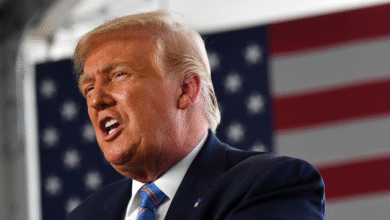Trump Is Screwing Over His Working-Class Supporters – and He’s Not Even Hiding It
At the same time, he's selling his name and presidential authority to fatten his bank account on a scale previously unimaginable. Will it spell trouble for Republicans in 2026?

During his presidency, Donald Trump has enriched himself so blatantly that even his most loyal Republican allies now defend it by saying, “At least he does it openly.” But what’s more alarming is that Trump and his party are impoverishing their working-class supporters — and they’re doing that openly too.
The so-called “Big, Beautiful Bill,” Trump’s new economic package narrowly passed by the House of Representatives last week, is a striking example of this. According to analysts at the Penn-Wharton Budget Model, the top 10% of earners would receive 70% of the bill’s financial benefits, while the bottom 10% would actually lose money. Even more concerning, the bill would add more than $3 trillion to the national debt, increasing interest burdens on taxpayers and raising the risk of a financial crisis.
Ironically, Trump owes his 2024 reelection victory to lower-income voters. Exit polls showed that his edge over Kamala Harris came largely from voters earning less than $50,000 annually — below the national median. While the Republican Party now brands itself as the champion of the working class, its economic policies remain largely unchanged, echoing Reagan-era trickle-down strategies but with even greater boldness.
Trump is tightening the screws on the very people who put him back in office.
The budget bill combines major tax cuts with steep reductions in social spending. According to the Yale Budget Lab, the wealthiest 20% would see their post-tax income rise by an average of $9,660, while the top 1% would gain as much as $63,060. In contrast, the poorest 20% are projected to lose around $805 annually. The tax cuts for the poor are more than offset by $698 billion in cuts to Medicaid — which provides health care to low-income families and elderly residents in nursing homes — and approximately $300 billion in food stamp reductions.
By 2034, the Congressional Budget Office estimates that about 15 million people will lose their health insurance due to the bill’s new Medicaid rules and reduced subsidies for Affordable Care Act coverage. This could jeopardize the financial viability of rural hospitals — in regions where Republicans draw strong political support.
Trump 2.0 isn’t just more of the same. It’s more aggressive in undermining the economic security of the very working-class Americans who helped secure his return to power — and he’s doing it without apology.







